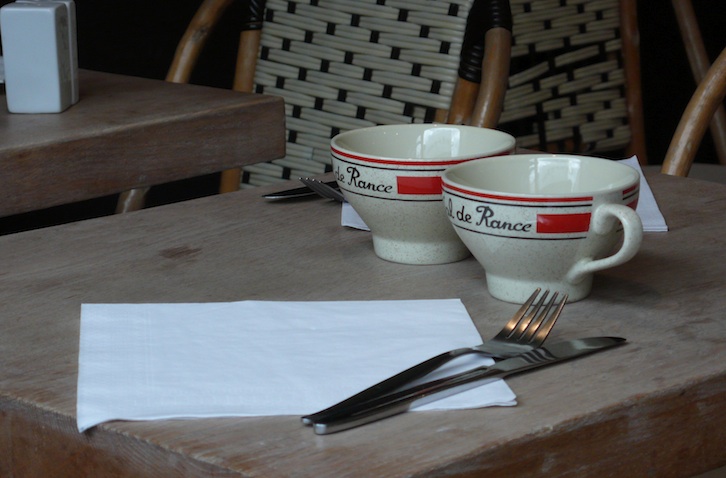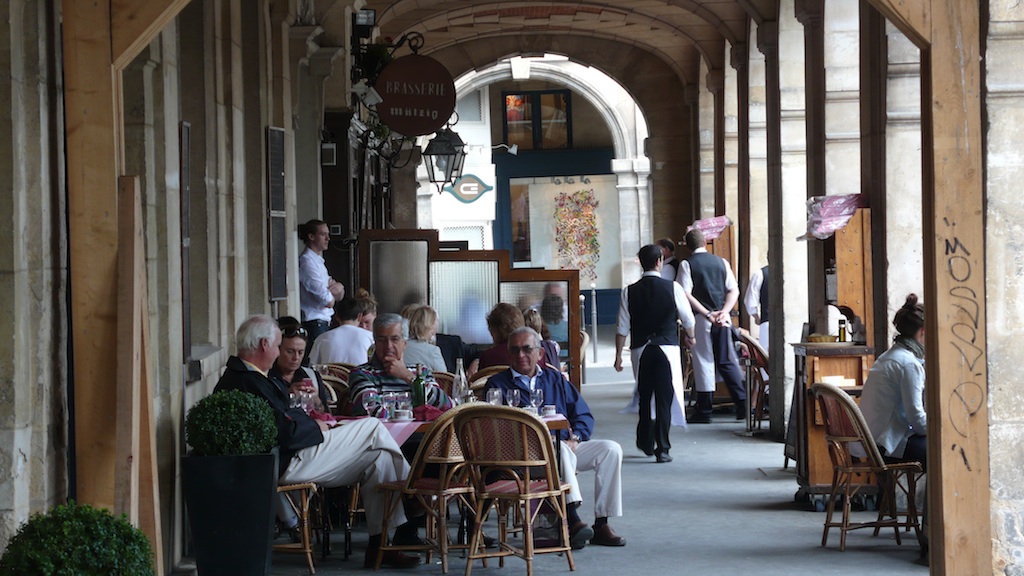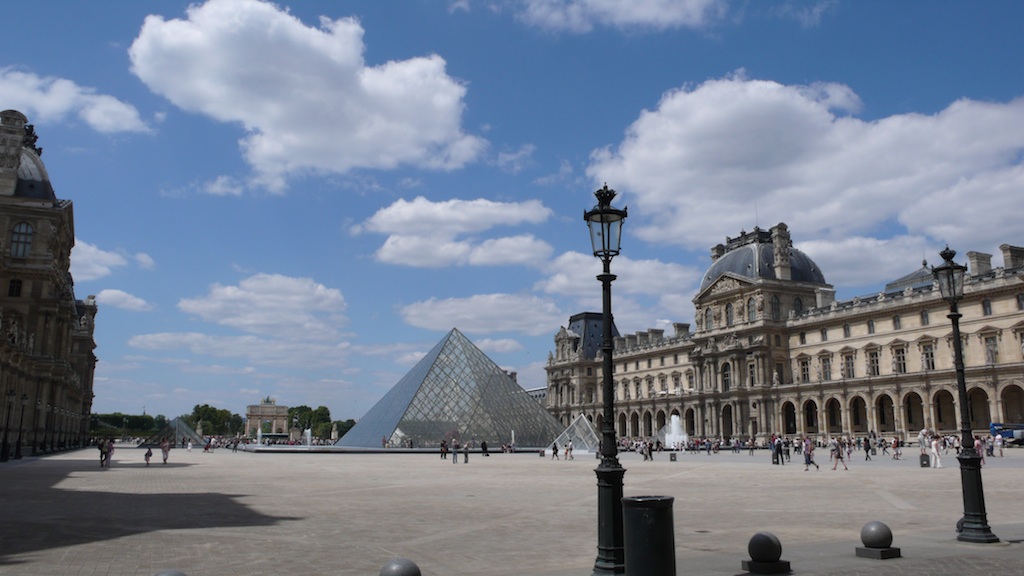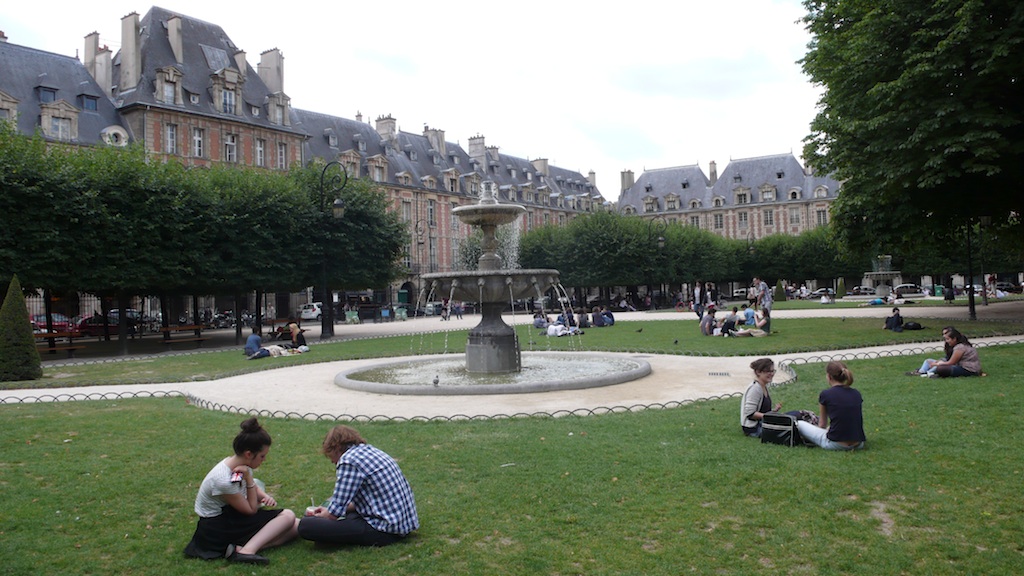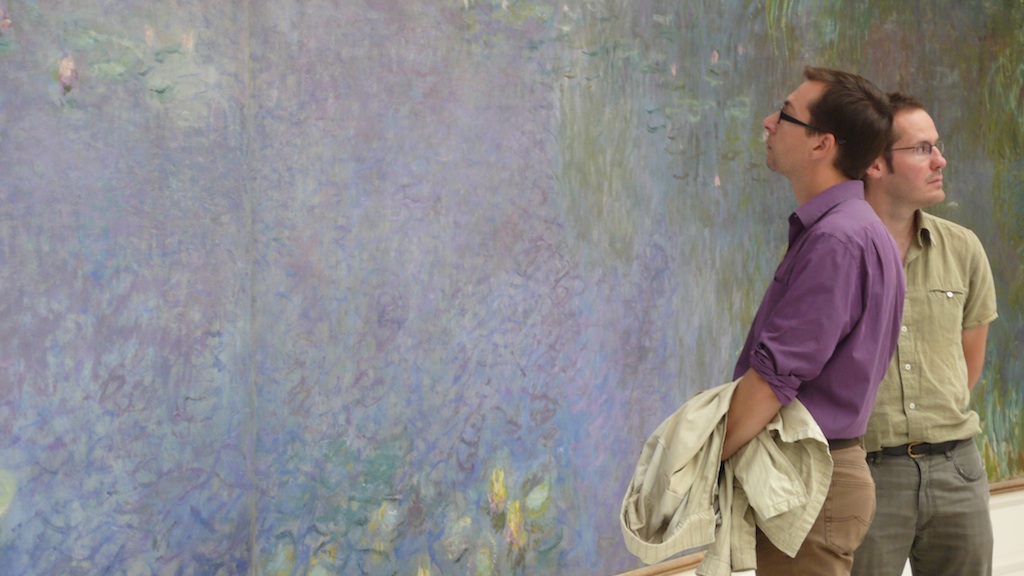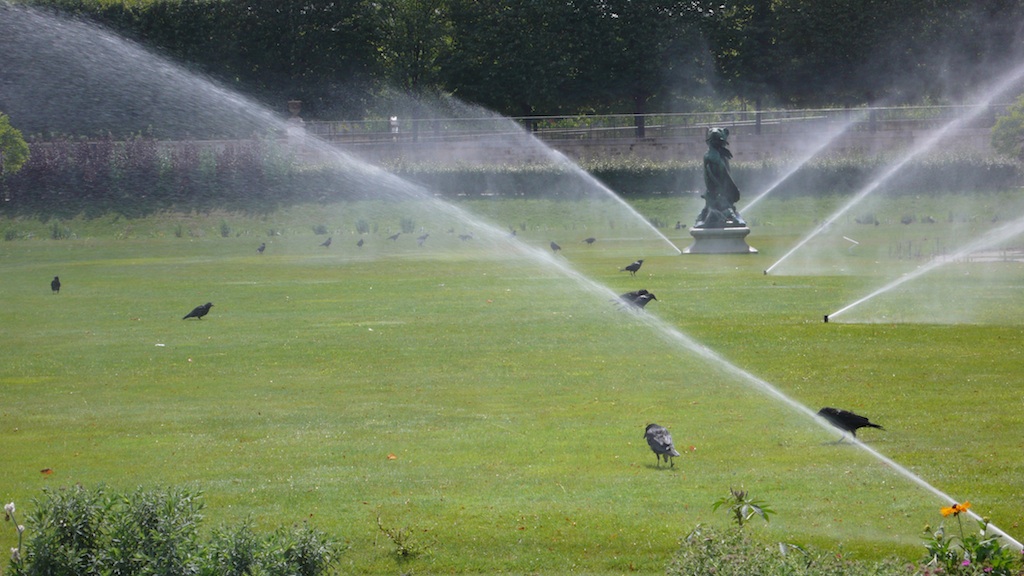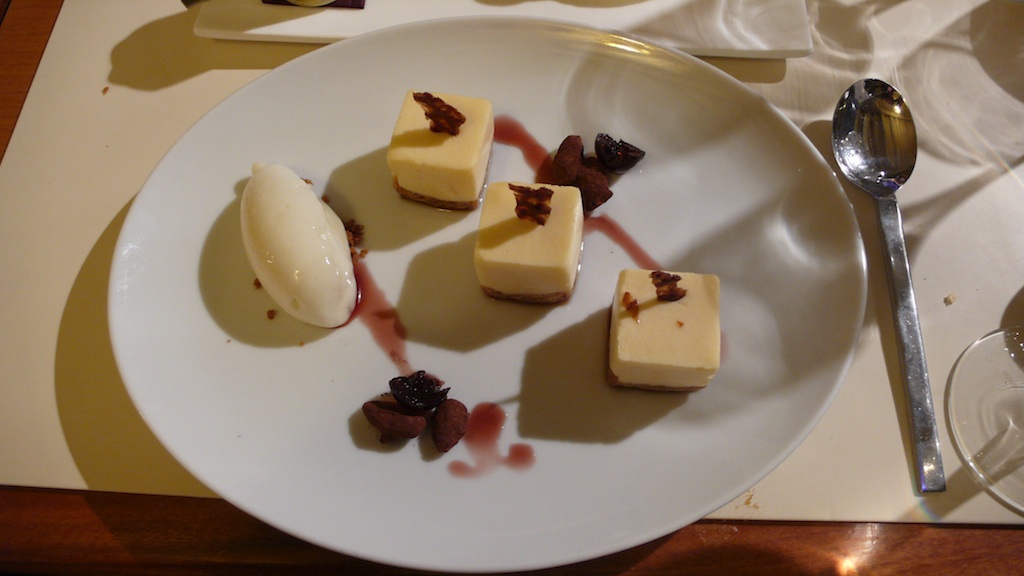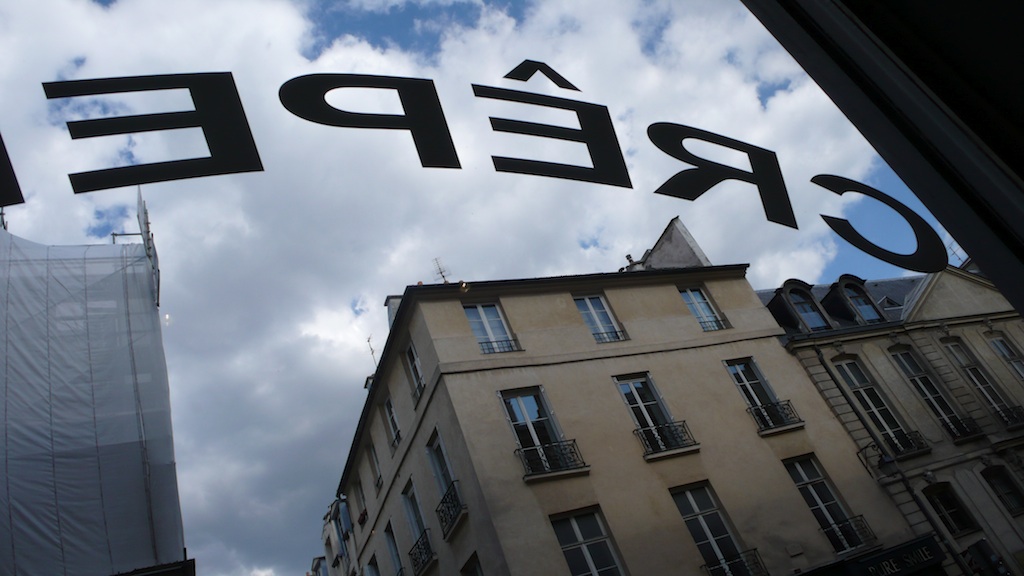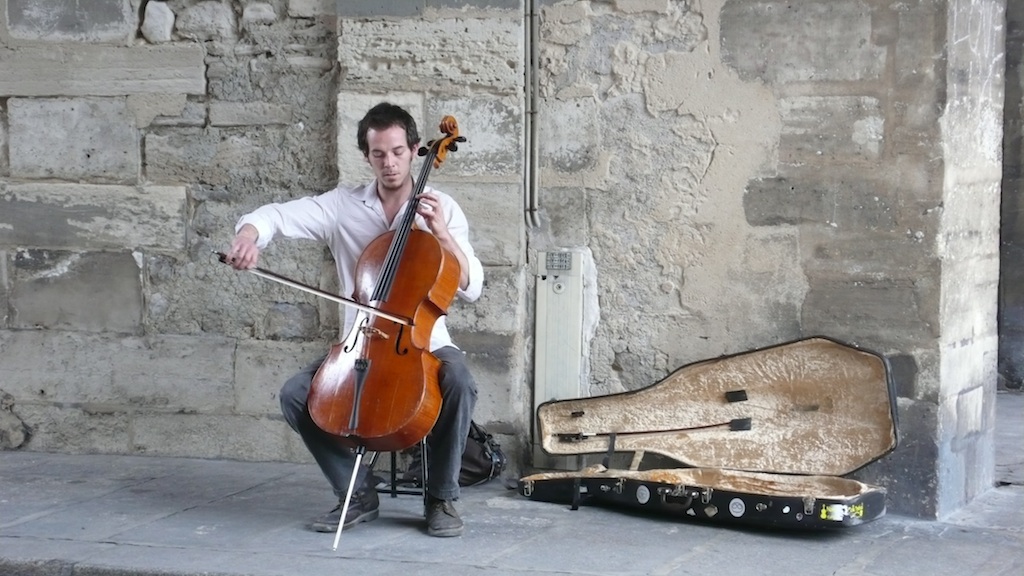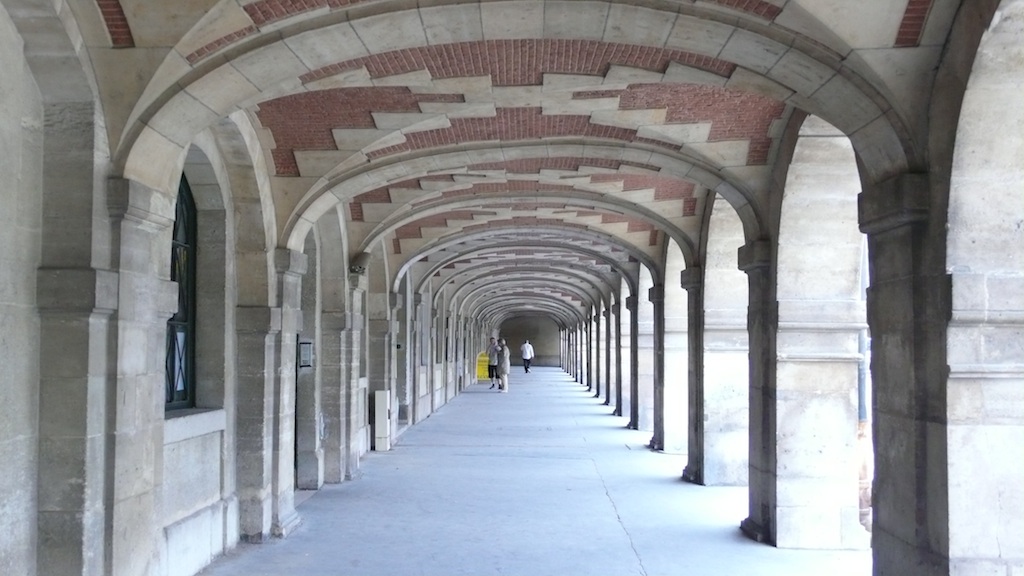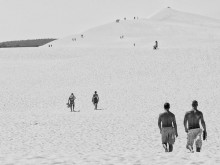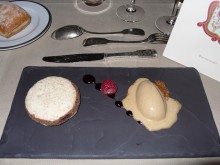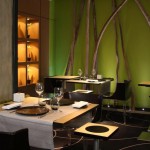The first time I went to Paris without a chaperone, I wandered the Left Bank, clutching a dog-eared copy of Hemingway’s “A Moveable Feast” in one hand, a baguette in the other. I was a walking cliché of an American student in Paris. Trooping back and forth over the bridges spanning the Seine, I stayed out all night long with three or four other Americans, sometimes singing Joni Mitchell’s “Free Man in Paris” at the top of our lungs.
In the morning, in the small hotel room I’d rented, I opened the wooden shutters onto the sun-lit courtyard and seated on a small, wooden cafe chair, my feet propped on the sill, I ate my baguette with a cup of yogurt. It was the most delicious yogurt I’d ever tasted in my life: so creamy with some kind of fruit that I’d never tasted before. (It was, I later discovered, passionfruit.) Yogurt like this didn’t exist in the States. And right then I knew that everything was better when you are in Paris.
As Hemingway wrote, “If you are lucky enough to have lived in Paris as a young man, then wherever you go for the rest of your life it stays with you, for Paris is a moveable feast.” Or in other words, we’ll always have Paris.
Though other cities beckon, and sometimes their call is answered, it is to Paris that we most often return. One year in Paris, the American dollar was so strong that the exchange rate was ten francs to the dollar – and we stuffed our faces with macaroons at Ladurée and pastries at Mariage Frères and shopped the sales at Printemps and Galeries Lafayette with frenzied abandon.
Another year, we flew to Paris and spent the entire week in the grand movie palaces along the Champs-Élysées, watching Marilyn and Rita Hayworth romp through classic American films like “How to Marry a Millionaire” and “Gilda.” At night, we danced at Le Palace, which was the Paris equivalent of Studio 54, but a thousand times more chic and sexy, of that we were certain because – everything was better in Paris!
Years pass and times change. The American dollar doesn’t wield the power it once did, but the City of Light still calls to you like a Siren. Even if you can no longer promenade down the Avenue Montaigne or rue du Faubourg St.-Honoré with the confidence of a bulging wallet, there’s still the Seine, and the Tuileries, and a thousand quotidian pleasures to remind you again why you’ll always love Paris best.
We returned this summer and parked ourselves in the 11th Arrondisement, along the tree-lined Boulevard Richard Lenoir, a newly-chic neighborhood near the lower end of the Canal St. Martin and a five-minute walk from the Marais. The Marais Bastille Hotel is ideally located, overlooking a broad avenue lush with trees and parks, trendy eateries and local watering holes, as well as several natural food stores. In other words, this is a neighborhood that’s filled with more residents (a large number of them single adults) than tourists.
As in seasons past, we headed directly to the Marais and wandered through Place des Vosges. Once known as Place Royale, Place des Vosges is the oldest planned square in Paris, built by Henri IV in the 17th century – and the prototype for residential squares throughout Europe. As charming now as it was then, it’s nearly impossible not to feel the pull of one of its corner cafés. We succumbed to Café Hugo, ordering frites and salades, wine and coffee, while eavesdropping on the locals and watching the breeze stir the leaves of the linden trees.
Even with a weakened dollar, it’s possible not to break the bank in Paris. Wander along the small grocers and bakers of rue Rambuteau in the Marais and stock your shopping bag for a picnic along the Seine. The baguette that we purchased at Boulangerie/Patissier/Atelier Huré at 18, rue Rambuteau was the best we’ve ever eaten. (See note above about everything tasting better in Paris.)
Take your booty across the Seine, over to the Île Saint-Louis, and descend the steps to the riverbank. Clean off a bench and park yourself along the river. Eat. Marvel at the view. Watch the bateaux mouches and the baby yachts glide by. Smile. You’re in Paris, eating the best baguette of your life.
We tried to see Woody Allen’s “Midnight in Paris” (at midnight, in Paris, how apropos, no?) but the movie screen was the size of a daily newspaper. So we accepted a refund and promptly used the twenty dollars for two coffees at Café de la Paix, where the never-ending parade of people passing by this celebrated café was as entertaining as a Hollywood film. That’s Paris: sometimes what you’re paying for is the real estate for la vie quotidienne.
On another night, we indulged on a wildly, creative gourmet meal at a sweet and unassuming gay little restaurant in the Marais. Monjul (slang for “mon jules,” meaning “my boyfriend, on the side”), located on rue des Blancs Manteaux, is run by Julien Agobert, a young chef with nearly twenty years’ experience in France and Spain who is as expert with presentation as he is with taste – and the resultant meal is a sensory and culinary epiphany. A three-course lunch runs less than twenty euros, which is equivalent to a Restaurant Week bargain in New York.
Few cities are as hospitable to a wandering flaneur as is Paris – and every chocolate croissant indulged can be walked off in an afternoon spent strolling through parks and along avenues. We hit the summer sales at Printemps and Galeries Lafayette, stopping to recharge at Cojean, which is Paris’ equivalent of London’s Pret – except better. Because everything is better in Paris, remember?
No matter where you find yourself in Paris this summer, if your eyes are open, and your ears alert, you’re bound to fall in love again. Resistance is futile; the City of Light remains as romantic as when you first glimpsed it during the flush of youth.
WHAT TO DO:
Musée de l’Orangerie: Closed in 2000 for extensive renovations and reopened in May of 2006, Musée de l’Orangerie (the orangery of the Tuileries Palace) is the permanent home of Claude Monet’s “Nymphéas” (“Water Lilies”), as well as the repository for the Jean Walter and Paul Guillaume Collection, a true connoisseur’s collection of masterpieces from the likes of Cézanne, Renoir, Picasso, Rousseau, Matisse, Derain, Modigliani, Soutine, Utrillo and Laurencin.
Nearly as mesmerizing as Monet’s “Nymphéas” (arranged in two oval rooms) is the awe from the museum’s visitors at finding themselves completely surrounded by such brilliance. It’s a joy to witness.
LINK: Musée de l’Orangerie
WHERE TO STAY:
Hotel Marais Bastille: Ideally situated at the edge of the Marais on the tree-lined Boulevard Richard Lenoir, the Marais Bastille is within easy walking distance of the Bastille Opera House and the Picasso Museum. A three-star establishment with four-star service and hospitality, this sleek and stylish hotel is a member of the world’s largest hotel chain, but you’d never know it upon crossing the threshold.
Instead, the Marais Bastille feels as comfortable as a well-heeled Parisian’s townhouse, with the same level of conviviality that you’d expect from a friend hosting you for the weekend. The staff is unfailingly polite and accommodating, as well as efficient and cheerful. Managed and operated by a Frenchman born and raised in Morocco, with a Colombian wife, the hotel exudes the kind of gracious elegance one expects from true citizens of the world: those who appreciate the joys of travel – and the comforts of home.
Furnished in a palette of pale browns and dove gray, with splashes of puce and chartreuse, the rooms are beautifully designed, with keen attention to detail. Decorated with restraint, with complimentary WiFi and LCD TV, these are rooms without unnecessary frou-frou and, thereby, perfect for contemporary life in Paris.
Breakfast is served in the library, which also serves as a lounge in the evenings. The lobby is a testament to clean lines and thoughtful design (with complimentary WiFi throughout the hotel), while the interior courtyard is perfect for a late afternoon tea or apero.
To open the French window of one’s room at the Marais Bastille in the morning and to gaze across the boulevard at the lushly-landscaped park is to feel a part of Paris – and what more could you ask of a hotel than for you to feel completely at home.
LINK: Hotel Marais Bastille or Hotel Marais Bastille
WHERE TO EAT:
Monjul: A jewel in the heart of the Marais, Monjul is the extremely accomplished restaurant of Julien Agobert, a chef with nearly twenty years of experience. With a mastery of French cuisine, Agobert also possesses a joyous vision that manifests itself in plates that are as aesthetically pleasing as they are gourmet treats. In keeping with its suggestive name, Monjul makes a delicious setting for romantic assignations and seductive scenes.
LINK: Monjul
Cojean: At last count, there seemed to be nineteen of these adorable, self-serve restaurant/cafeterias scattered around Paris – and all of them serving some of Paris’ most nutritious gourmet food. Furthermore, every Cojean is stocked with a young and energetic staff that is as happy to serve you this delicious food as you are to eat it. Similar to London’s Pret, Cojean is a reminder that French food is – ultimately and always – good for you.
LINK: Cojean
Open Café: One of the most popular gay bar/bistros in Paris, centrally located on rue des Archives and rue Sainte-Croix de la Bretonnerie, Open Cafe is as perfect for a morning coffee as it is for an afternoon apero. The boys are lovely to look at and the energy is infectious and there’s always a parade to watch. You might linger longer than you’d originally intended – but you’ll be happy you did.
LINK: Open Café
Air France: Even when flying economy, Air France makes a transatlantic flight seem more like a luxury than drudgery, thanks in part to their fleet of Airbus 380-800 (and Charles Lafitte 1834 Champagne…).
Since 2007, the Airbus 380 has generated raves from passengers, regardless of what class they’re flying – and Air France creates an atmosphere that is as elevating as the vintage wines they serve. Two-course dinners are nearly as tasty as the descriptions on the menus – and the demi-bottles of wines are perfect accompaniments to chocolates and cheeses. Blankets and pillows are clean and fresh – and the multi-lingual staff is as polished and professional as a Chanel suit. You might imagine feeling cramped on a plane with this capacity, but the A380-800 recycles air every three minutes – and there are four high-level air outlets (rather than the industry standard of two).
In short, this is one smooth flight – and a reminder of why France has always been at the forefront of aviation technology.
LINK: Air France
Rail Europe: One of the glories of Europe is its rail system, which, in most EU countries, runs as smoothly as a Swiss watch. France’s TGV (Train à Grande Vitesse, meaning “train of high speed”) is a particular delight – and to ride on the upper level while staring out at the passing vineyards is to feel an immediate kinship with the many expatriates who’ve chosen to make Europe their home.
Recently, Rail Europe announced an LGBT promotion in four gay-friendly countries – Switzerland, Germany, Denmark, and the Netherlands – that enables you to save 10% when you journey beyond fabulous France.
LINK: Rail Europe
PHOTOS:
Click here for MRNY slideshow.
ADDITIONAL TOURISM INFO:
2X Magazine: the gay magazine of Paris

